SubSub page:Voltage controlled 24dB/oct filter using LDRs
design 2022
Introduction:
This 4th order audio filter design is based on only four LDRs, one LED and two opamps.
Driving the LED you can control the cutt-off frequency from approximately 20Hz to 20kHz.
Using the LED-resistor network described gives you a roughly exponential voltage control curve.
The simple circuit is easy to construct and component cost was around 4 Euro.
Example sounds, no effects used, input signal is static saw wave from function generator:
filter sweep wobble, low Q
filter sweep wobble, medium Q
filter sweep wobble, high Q
filter sweep ramp down, low Q
filter sweep ramp down, medium Q
filter sweep ramp down, high Q
Demonstration movie with example sounds
Circuit diagram (for dual supply):
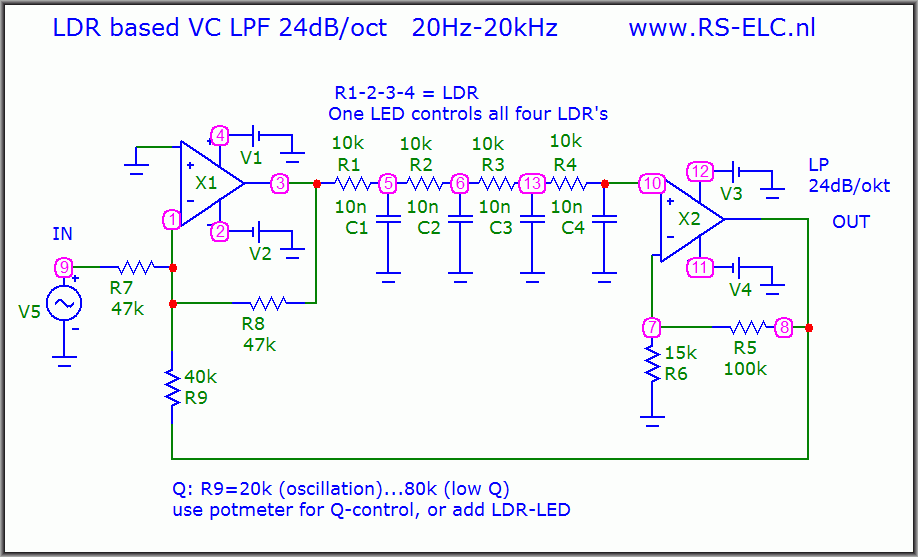

Circuit diagram (for single 5V supply) and build version :
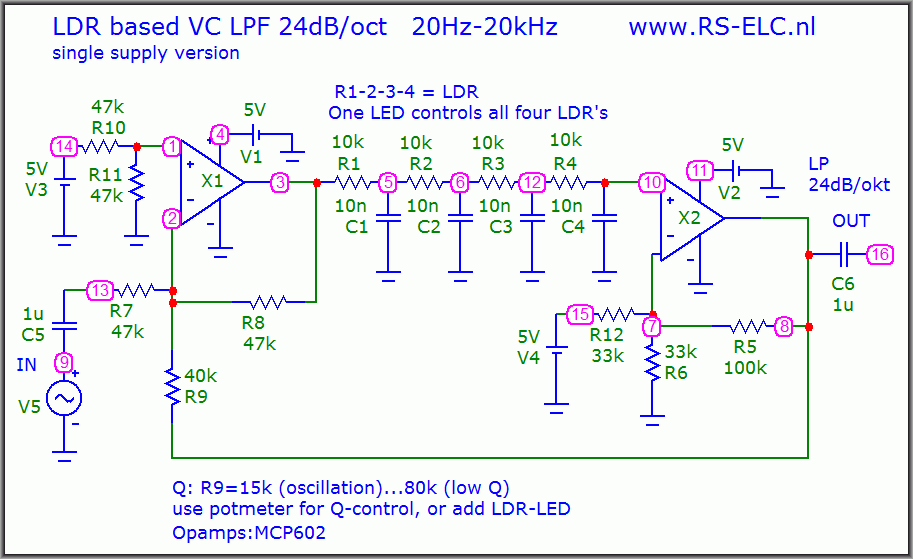
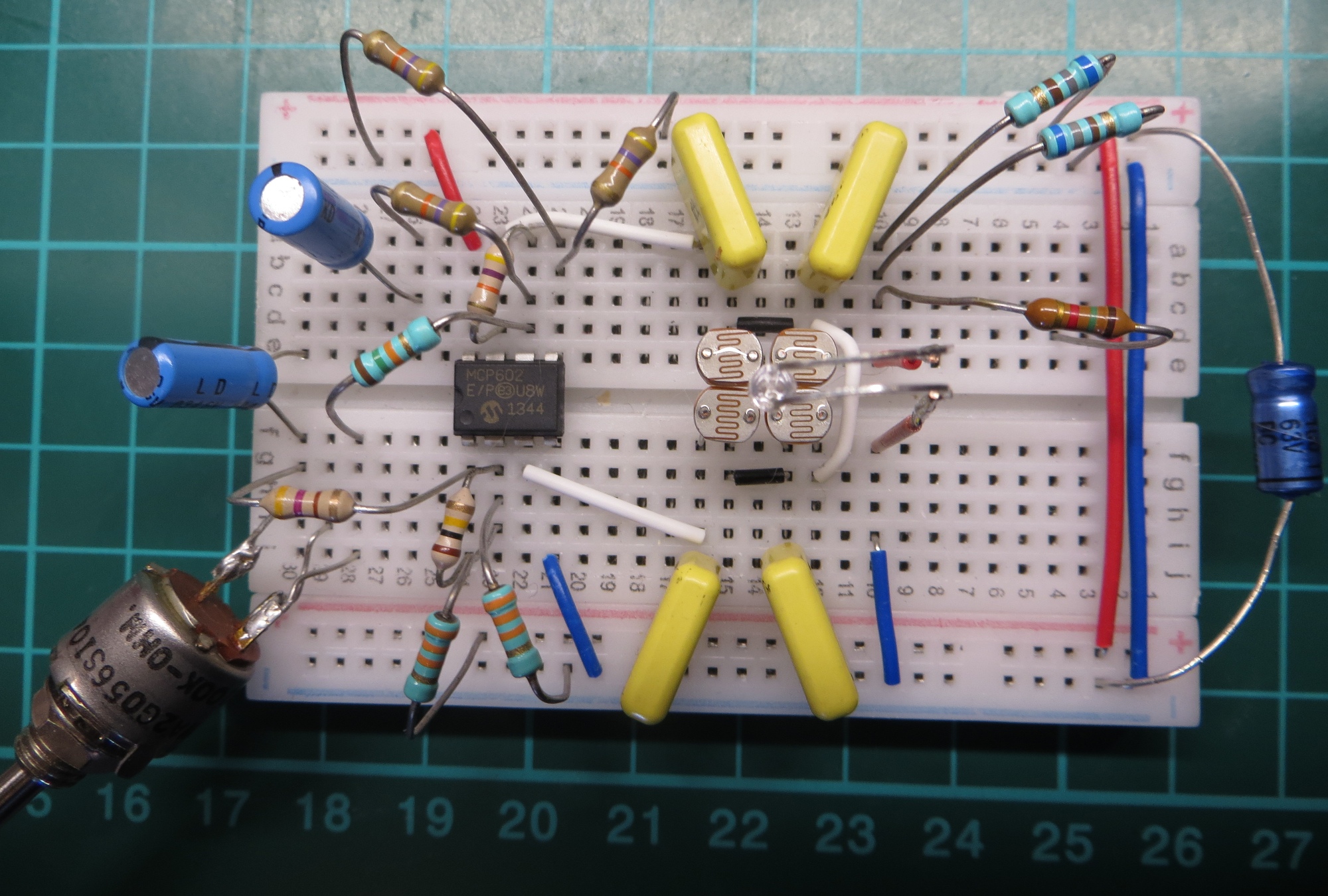
Simulation showing the variable Q by using a potmeter+resistor for R9:

Measurement showing the LDR resistance as a function of LED-current:
(from 2kohm to 500kohm the LDR resistance is close to being a linear function of the LED current)
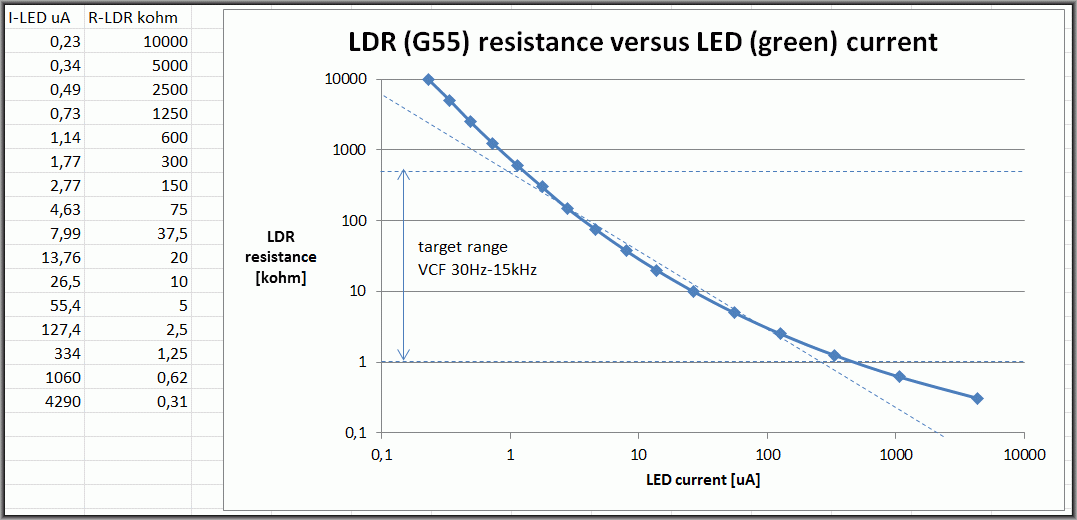
Note: A very high brightness LED was used here (OVLBG4C7), 0.5uA was enough to have visible light
Simulation showing exponential control of LED-current with 0-5V linear drive:
(In practice you might need to adjust resistor values to match your LED)

What is the best color LED to drive an LDR?
If you have an LDR based on CdS (I have these) then green or yellow works best. Here is the curve:
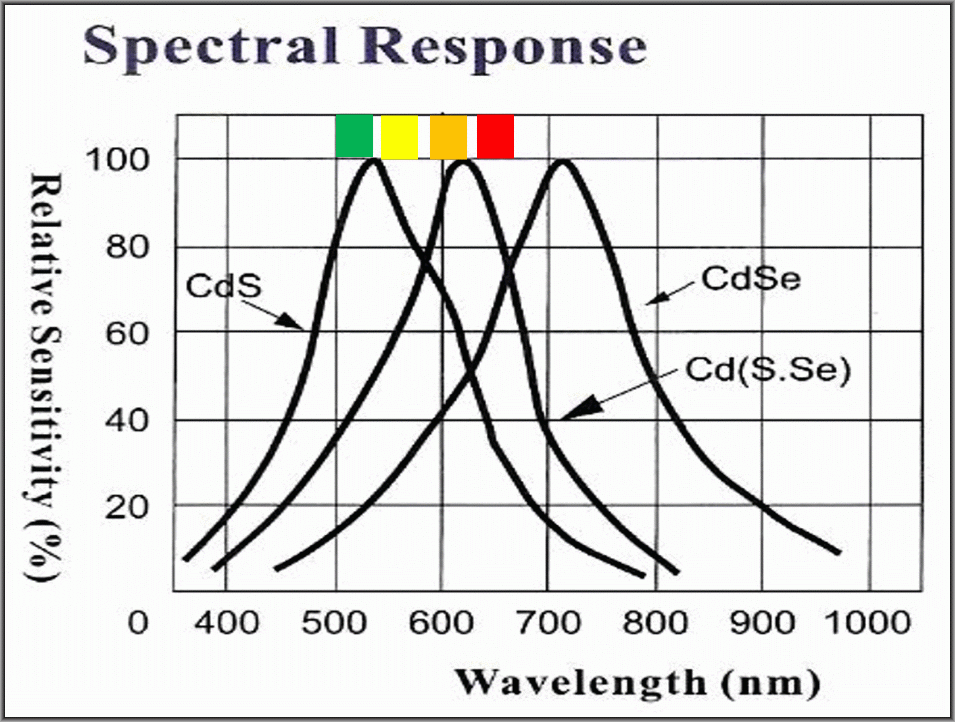
General remarks:
-The optical control results in a extremely low control signal leakage compared to common electronic control solutions.
-LDRs are mentioned to have a fairly slow response, in the 10-20ms range.
I found this to be only true for the decay but the attack measures faster, listen to the fast attack in the demomovie.
I measured that the attack can actually be below 1ms as long as the LDR resistance is stepped down to low resistance values.
This results in short attack times being possible for opening the filter at the start of a note.
In music applications attack times are usually shorter than decay times so that fits well.







